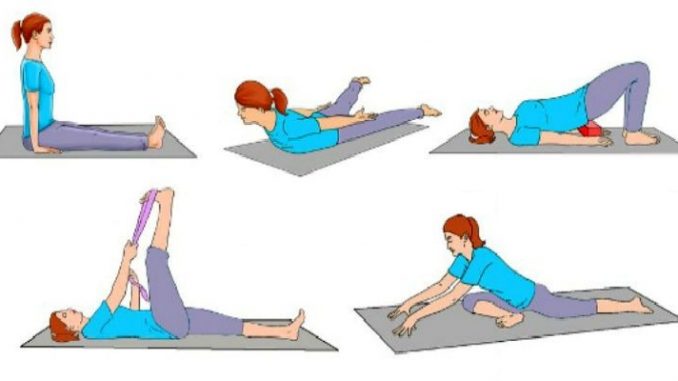The sciatic nerve is the widest and longest nerve in the body.
It begins near the spine in the lower back, runs deep through each buttock and travels down along the back of each leg.
A shooting pain often so severe it makes standing up seem like an impossible task, sciatic pain can be an excruciating experience. Ironically, it hurts more when one is sitting down, making this painful ordeal all the more unbearable.
Symptoms of sciatic pain can vary. However, it most commonly occurs on one side of the lower back and extends to the rear, legs and often down to the feet.
Some people report a searing pain in one area of the leg or rear while feeling numb in the other regions. Often, the aching leg may feel cold and weak.
Other symptoms may include weakness in the lower back or leg; numb thighs; burning or tingling sensations in the legs, rear and feet; and loss of bladder or bowel control.
Any condition that puts pressure on the lower back will result in sciatic pain. Spinal disorders such as spondylitis, a damaged or ruptured disc, spinal stenosis (narrowing of the spinal canal), degenerative disc disease and any other lower back injury can put pressure on the sciatic nerve and induce pain.
Some people might suffer from sciatic pain frequently, while others might not. However, if left untreated, symptoms can get worse with time.
Sciatic pain usually starts slowly. It may be worse during the night; when laughing, sneezing or coughing; when sitting, standing or walking for long durations; and after bending backward or forward.
While there are many medical treatments and therapies for lower back and sciatic pain, many strength and conditioning specialists swear by the beneficial effects of any exercise that involves stretching for reducing sciatic and lower back pain.
One highly effective, specialized and advanced stretching technique for sciatic pain is yoga.
People with moderate to serious back pain who alternated between yoga sessions and regular care (including pain-alleviating medication) reported a significantly greater reduction in the intensity and frequency of pain after yoga than after regular care, according to a 2009 study published in Alternative Therapies in Health and Medicine.

Here are a few yoga poses that can reduce sciatic pain in less than 15 minutes.
NOTE: Please consult your doctor before performing these yoga exercises.
1. Staff Pose (Dandasana)

This is a basic, seated pose. It will stretch your legs, flex your lower back, promote blood circulation in the aching areas, and release pressure from the sciatic nerve and give it room to breathe.
- Sit on a mat with your legs outstretched in front of you and your hands at your sides with your palms touching the floor.
- Stretch your legs by flexing your feet forward.
- Pull your back up, and stretch your spine, lengthening it.
- Take deep breaths, maintaining this position for 15 to 30 seconds.
- Relax, and repeat the exercise 5 to 10 times.
Beginner’s tip:
Roll up a blanket, or use any other form of padding, and place it under your buttocks for support.
2. Locust Pose (Shalabhasana)

This yoga exercise will strengthen your lower back and promote blood circulation to your lower hips.
Blood circulation in the lower back and areas below is often compromised due to pressure that builds up for a number of reasons, resulting in sciatic pain. Better circulation promotes healing and provides pain relief.
- Lie face down and place your arms at your sides with your palms outwards. Your toes should point downward, touching each other, while the heels should be apart.
- Make sure your chin touches the ground, your neck is elongated and your pubic bone is pushed down.
- Take a deep breath and raise your legs, arms and chest simultaneously. Your knees should be lifted off the ground, your shoulders should come close together, and your neck should be straight.
- Once you’ve lifted yourself up, exhale and stay in that position for 5 to 8 seconds. Stretch your back gently.
- Next, maintaining that position, inhale and spread your legs apart, then exhale and bring them back in. Repeat this exercise 5 times. This is an addition to the traditional locust pose, which is especially effective in reducing sciatic pain.
- Gently bring your body back down to the floor, fold your hands under your forehead and rest, face down, for 1 minute.
- Repeat the exercise 5 to 10 times.
Beginner’s tip:
Keep a rolled up blanket under your abdomen and thighs for support.
3. Supported Bridge Pose (Setu Bandhasana)
This is an incredibly effective yoga pose for gently stretching the lower back and major buttock muscles. Doing so will improve flexibility and allow movement in the areas where pain is made worse by constriction and inactivity.

It will also improve blood circulation that is critical to the proper functioning and recovering of any organ of the body.
- Lie down on your back, with your knees bent and your feet firmly planted on the floor.
- Draw in your heels close to your buttocks and place your arms, palms down, at your sides.
- Exert pressure on the floor with your feet and palms for support, take a deep breath and gently lift your hips off the ground. Consciously push your tailbone up toward your pubic bone. Your shoulders, neck and head should stay on the floor, your lower back should be elongated, and your knees should be away from each other.
- Maintain this position for 10 to 15 seconds, exhale and come back down.
- Repeat this exercise 5 to 10 times.
Beginner’s tip:
Place a bolster or block under your lower back, below the region right above your tailbone, for support.

